I have to re-upload this for obvious reasons. I didn't want to run out of downloads.

American Airlines Flight 320000!
American Airlines Flight 320 was a scheduled flight between Chicago Midway Airport and New York City's LaGuardia Airport. On February 3, 1959, the Lockheed L-188 Electra performing the flight crashed into the East River during its descent and approach to LaGuardia Airport, killing 65 of the 73 people on board. Weather conditions in the area were poor, and the aircraft descended through dense clouds and fog. As it approached the runway, it flew lower than the intended path and crashed into the icy river 4,900 feet (1,500 m) short of the runway. American Airlines had been flying the newly-developed Lockheed Electra in commercial service for only about two weeks before the crash, and the accident was the first involving the aircraft type.
After the Electra Tragedy in East River, near LaGuardia Airport
-After the crash, surviving flight crew members said that the aircraft's instruments had indicated normal and appropriate altitudes right up to the moment of impact, but eyewitnesses who saw the aircraft from the ground said that the aircraft seemed to be flying much lower than what was normal for planes approaching the airport. An investigation by the Civil Aeronautics Board concluded that several mistakes by the flight crew were the cause of the crash, and the flight crew's inexperience flying the type of aircraft, and poor weather conditions were contributing factors. The Air Line Pilots Association disputed the conclusion, blaming the accident on faulty instruments in the aircraft and on poor weather conditions, not on any mistakes made by the highly experienced flight crew. The lessons from the accident led to new regulations requiring flight recorders in large passenger aircraft, and to new construction at LaGuardia Airport to extend the runways, improve approach lighting systems, and add an instrument landing system to the runway that was involved.
Background
Flight 320 was a regularly-scheduled flight between Chicago and New York City operated by American Airlines using one of the company's newly-obtained Lockheed L-188 Electra turbine propeller aircraft. The airline had first started flying the Electra in commercial service on January 23, 1959, and it offered six daily round-trip flights on its route between New York and Chicago, with plans to deploy the new aircraft to other destinations once Lockheed was able to deliver more. The new planes, which carried seventy passengers, were faster than the company's Douglas DC-7 aircraft that it had been using on the route, and shortened the flight from Chicago to New York by half an hour.
On the evening of February 3, 1959, the flight was scheduled to leave Chicago's Midway Airport at 9:00 p.m. EST, but wind-driven snow delayed its departure.:?2? The flight was eventually airborne fifty-four minutes after it was scheduled, and was one of the last flights to depart Chicago that evening before the airport was closed due to the storm.:?3? Sixty-eight passengers and five crew members were aboard, and the trip was expected to take one hour and forty-two minutes.:?1–2? The flight to the New York City area was uneventful, with the aircraft cruising at 21,000 feet (6,400 m).:?3?
Accident
At 11:34 p.m., the flight approached the New York City area. The LaGuardia Airport approach controller advised the pilots that the weather conditions at the airport included overcast skies with a ceiling of 400 feet (120 m) and a visibility of 1.25 miles (2,000 m).:?2? The controller instructed the flight to proceed to the north of the airport, and to prepare to perform a direct approach to Runway 22 over the East River. At 11:55 p.m., when the aircraft was 2.8 miles (4.5 km) from the airport, LaGuardia tower controllers gave the flight its final landing clearance for runway 22. The flight crew acknowledged the clearance with a simple acknowledgement of "320", and there was no further radio communication.:?3? Moments later, the aircraft, flying at 140 knots (160 mph; 260 km/h), struck theEast River about 4,900 feet (1,500 m) short of the runway.:?3?
A witness working on a nearby tugboat said he saw the aircraft flying very low over the river before it hit the water with a very loud noise. A different worker on the tugboat also saw the impact, and said that it looked like the aircraft hit the river with a nose-down angle. A witness in a car approaching the Whitestone Bridge described seeing the aircraft pass overhead only about 100 feet (30 m) above the ground. He did not notice if the landing gear was down but he said he could see the whole underside and the lights in the windows of the aircraft.:?5? Surviving passengers and crew members in the main cabin said that the descent prior to the crash seemed to be uneventful and routine.:?4–5? Many residents in the area said they heard the Electra fly overhead and that it sounded like it was flying lower than planes usually did in the area.
The accident was the first crash involving the Lockheed L-188 Electra aircraft, which had begun commercial service at American Airlines in the previous weeks. It was the first significant accident involving an American Airlines aircraft since the crash of American Airlines Flight 327 on January 6, 1957.
Aftermathhh!
A privately-owned tugboat from New England was on the river near the crash when its crew saw and heard the impact. The crew released the barges that the boat had been towing and headed to the crash site. The tugboat was the first to arrive at the scene, and the crew lit up the area with the boat's searchlight. Everyone who survived the crash was rescued by the crew, including one man who was pulled up from 4 feet (1.2 m) below the surface of the water. Two police helicopters and at least a dozen boats from the Coast Guard and the New York Police Department arrived minutes later. In the darkness and the fog, rescuers could hear the cries of survivors, but poor visibility and swift river currents made recovery of the victims of the crash extremely difficult. Responders and nearby residents in the area heard shouts for help from locations further downstream from the crash site.
Public safety agencies set up four rescue stations along the river to evacuate survivors. Ambulances that were taking injured victims to hospitals had a hard time driving on the icy roads. Survivors were taken to Flushing Hospital and Queens General Hospital. Two temporary morgues were also set up on opposite sides of the river to receive victims as they were recovered.
By 5:00 a.m. the next morning, at least 9 survivors had been rescued, 22 bodies had been located, and 39 other victims were still missing when the high winds and driving rain led to the decision to suspend the rescue operation. One of the survivors who had been taken to a hospital later died of her injuries. The New York Red Cross furnished supplies of rare blood types to aid the victims of the crash. Bodies that had been recovered were taken to Queens General Hospital for identification with assistance by agents from the Federal Bureau of Investigation and 25 city detectives. The agents used fingerprint records from its immigration, personal identification, and war service files to help identify the victims. Autopsies on twenty of the bodies revealed that the victims had died of crushed chests and broken necks, showing the force of the crash.
During the crash, the fuselage of the aircraft had broken into several pieces, but a twenty-foot (6 m) section of the aircraft remained in one piece. After two hours, three feet (1 m) of the tail of the aircraft was the only part of the aircraft that was still visible above the surface of the water. Searchers on boats and on the shore picked up plane debris, personal belongings, and mail from the plane.
In Washington, D.C., the Civil Aeronautics Board (CAB) dispatched two investigators as soon as authorities became aware of the crash, and ordered the airline's records to be impounded. An additional team of 25 investigators was assembled and dispatched later the next day. The team was given the task of investigating all aspects of the flight, including the weather, flight operations, engines and propellers, flight instruments, and aircraft structures. Queens County District Attorney Frank O'Connor also started an inquiry about how the rescue efforts could have been improved, telling reporters that more passengers might have been rescued if there had been a system of rescue boats available to serve the city's two airports. The House Interstate and Foreign Commerce Committee asked the head of the Federal Aviation Agency (FAA) to report on the accident in a closed session in the days after the accident. After the two and a half hour meeting, it formed a special House subcommittee to investigate the crash and the overall safety issues raised by the transition to jet and turboprop aircraft.
Days after the crash, newspapers reported that there were safety systems that could have helped prevent the crash if they had been in place at the airport. A representative of the Air Line Pilots Association said that a system of flashing lights known as the Electronic Flash Approach System could have helped the pilot judge his altitude, if it had been present. The association also called for the installation of a more comprehensive instrument landing system that would have provided altitude and horizontal guidance to flight crews landing on runway 22. The system in place at the time of the accident only provided horizontal guidance, although such a system was already installed for the same runway for aircraft approaching from the opposite direction. At the time, there were only two airports in the United States that had such a system installed for approaches on both directions of a runway. At a meeting on February 5, commissioners of the Port of New York Authority explained that the installation of such systems on runway 22 was considered to be very difficult because the approach lighting system would block the waterway used by ships to reach docks in Queens.
Aircaft
The aircraft was a Lockheed L-188 Electra turbine propeller aircraft, serial number 1015, registered as tail number N6101A. This was one of the first Electras delivered to American Airlines, and was named "Flagship New York". Construction had been completed by the Lockheed Aircraft Corporation on November 27, 1958.:?25? At the time of the crash, the aircraft had flown for a total of 302 hours. It was powered by four Allison 501-D13 engines.:?25?
Promoted as an efficient, fast, and profitable aircraft, the Electra was the first turbine propeller aircraft to be produced in the United States. The first plane was delivered to Eastern Air Lines in October 1958, who began operating commercial flights with the aircraft on January 1, 1959. American Airlines took delivery of its first Electra in December 1958, and its first commercial flight was twelve days before the crash. After the crash of American Airlines flight 320, two more Electras crashed in the following months after suffering catastrophic structural failures, killing all of the occupants. Braniff International Airways Flight 542 crashed in September 1959, and Northwest Orient Airlines Flight 710 crashed in March 1960. After extensive research, Lockheed identified and corrected a flaw in the engine mounts which had been the cause of the structural failures of the other two crashes. However, the negative publicity surrounding all of the accidents within a short period of time led to the loss of public confidence in the safety of the aircraft, and only 174 were ever produced.
Passager and Crew
The flight carried 68 passengers and 5 crew members, all residents of the United States. Of the 68 passengers, 5 survived. The bodies of two of the victims were never recovered. One of the two flight attendants and the captain of the flight died in the crash.:?1? One of the crash victims was Beulah Zachary, the executive producer of the television series Kukla, Fran and Ollie, which was broadcast from 1947 to 1957. Also aboard the plane was Robert Emerson, a research professor at the University of Illinois who was internationally known for his research into plant photosynthesis, and Herbert Greenwald, a Chicago real estate developer.
The captain of the flight, Albert Hunt DeWitt, was 59 years old.:?25? He started his aviation career at in 1929 by flying for the Thompson Aeronautical Corporation of Cleveland, which was later acquired by American Airlines.:?25? A resident of Decatur, Michigan, he was qualified to fly all of the aircraft that had been operated by American Airlines and was considered one of the most experienced commercial pilots in the world, with seven million miles flown. He had a total of 28,135 hours of flight experience, including 48 hours in the Lockheed Electra and 2,500 hours of instrument time, and had at one time acted as one of American's chief pilots in the New York area.:?25? He learned to fly airplanes when he was 24 years old. In 1930, he had been involved in an accident while he was flying a mail plane over Mishawaka, Indiana, on his way to Chicago. Caught in a severe snowstorm, his aircraft stalled and entered a spin, but he was able to jump out of his plane before it crashed and he landed in a 75-foot-high tree. Before joining American Airlines, he had been a barnstormer in Indiana and Michigan and had been an instructor for various flying schools and clubs in the 1920s. He served in both World Wars; in World War I, he was a motorcycle courier, and during World War II, he served as an instructor at flight schools in New York and Chicago. He had planned to retire that May, but did not survive the crash of Flight 320. His cause of death was listed as drowning, but the medical examiner stated that he had also suffered severe internal injuries that would probably have been fatal had he not drowned.
The first officer, 33-year-old Frank Hlavacek, was a resident of Wilmette, Illinois, and had been employed with the company for eight years.:?25? He had a total of 10,192 logged hours, of which 36 hours were in the Electra.:?25? He had been flying since he was 14 years old and had served with the United States Army Air Forces in World War II. Before joining American Airlines, he had owned his own air service based in La Jolla, California. After the crash, he helped two of the survivors reach the remnants of the plane's wing, where they were rescued. He suffered fractures to his jaw, pelvis, and both legs in the crash as well as internal injuries, but eventually recovered and returned to work at American Airlines.
The flight engineer, Warren Cook, was 36 years old and had been working for American Airlines for eleven years. He had a total of 8,700 flying hours, of which 81 were in the Electra.:?25? He served in the United States Army Air Corps from 1940 to 1945. In the accident, he suffered a badly wrenched back, cuts, and bruises. After recovering from his injuries, he returned to work at American Airlines.
Crash Investigation
Within two hours of the crash, investigators interviewed flight engineer Warren Cook. He told them he had felt that the flight's approach to the airport was completely routine and when the aircraft hit the water it was completely unexpected. The investigators had to wait to talk to first officer Frank Hlavacek because of his injuries, but several days later he told them that he had been calling out altimeter readings to Captain DeWitt during the descent in one-hundred-foot (30 m) increments as they approached the runway. He said that he had barely gotten the words out for five hundred feet (150 m) when the plane struck the river. Even though both pilots were interviewed at different times and at different locations, both pilots stated that the aircraft struck the river just as Hlavacek was saying "five hundred feet".
As soon as weather conditions allowed, investigators began the process of recovering the aircraft wreckage. They recovered 25 percent of the plane by February 5, and 50 percent by the next day. On the day after the crash, crews attempted to use salvage cranes to raise the fuselage of the aircraft out of the river, but they were only briefly successful before the wreckage broke apart and most of it fell back into the water. The tail section was recovered on the evening of February 5, and newspapers reported that the damage to that section hinted that the aircraft may have crashed in a "nose up" position, as though the pilots had noticed at the last minute that they were well short of the runway and tried to climb. Divers were deployed to locate missing sections of the aircraft beneath the surface of the water, but the efforts were hindered by high winds, strong river currents, and low visibility in the water. Some pieces of the plane had been swept away by currents and were found as far away as Northport, Long Island, more than thirty miles (50 km) away. Each piece of the aircraft that was recovered was identified, tagged, cleaned off, and moved to Hangar 9 of the Marine Air Terminal of LaGuardia Airport. The nose section and cockpit of the plane were recovered late on February 7. The cockpit was in relatively good condition; the spring-wound clock on the instrument panel still working when the section was recovered from the river.
In response to the accident, on February 9, the FAA increased the minimum visibility requirements for Lockheed Electra landings during poor weather conditions. American Airlines and Eastern Airlines, the two airlines that were flying the Electras at that point, described the restrictions as temporary, likely lasting only a few days. Representatives of Lockheed Aircraft Corporation expressed disappointment in the new changes, but said the company would continue to cooperate with the investigation any way it could. The following day, the Agency reversed course, and said that the two airlines flying the Electra could resume flying with the previous visibility requirements.
Specifications
General Characteristics
- Predecessor Lockheed L-188 Electra
- Successors 2 airplane(s) +119 bonus
- Created On iOS
- Wingspan 97.3ft (29.6m)
- Length 104.6ft (31.9m)
- Height 33.7ft (10.3m)
- Empty Weight 46,740lbs (21,201kg)
- Loaded Weight 51,660lbs (23,432kg)
Performance
- Horse Power/Weight Ratio 0.232
- Wing Loading 25.1lbs/ft2 (122.8kg/m2)
- Wing Area 2,054.2ft2 (190.8m2)
- Drag Points 20338
Parts
- Number of Parts 260
- Control Surfaces 7
- Performance Cost 917

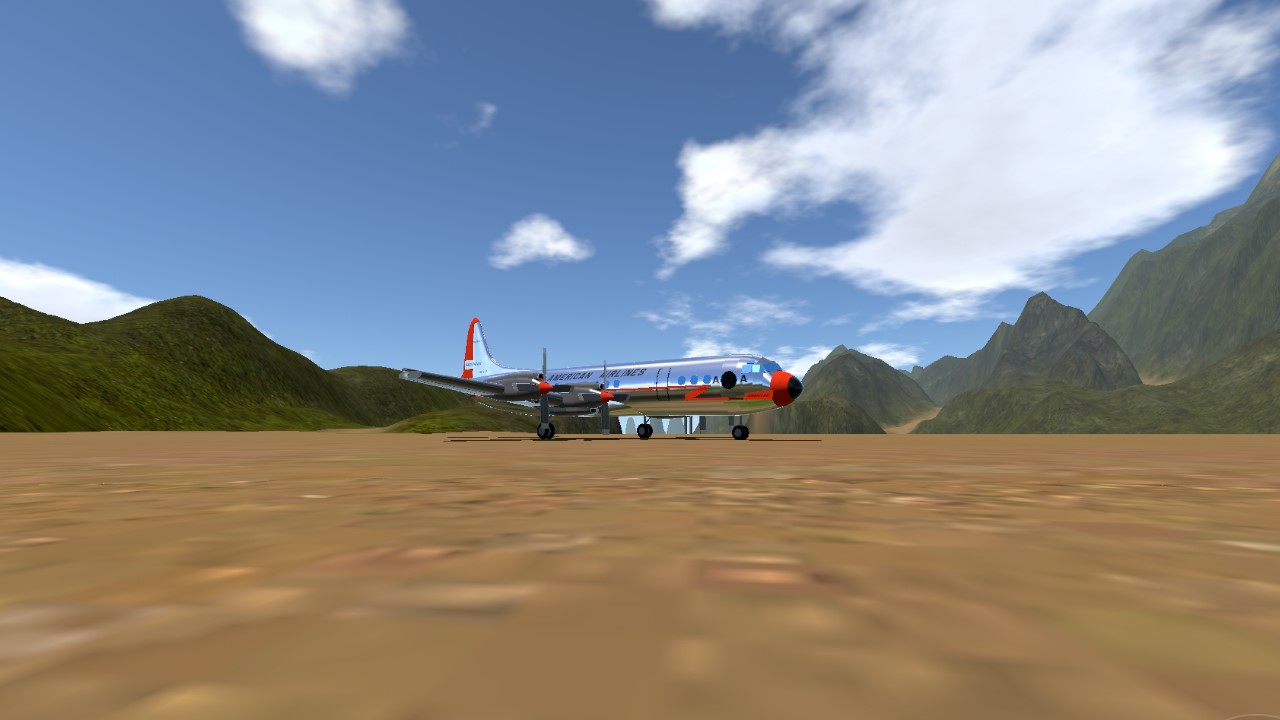
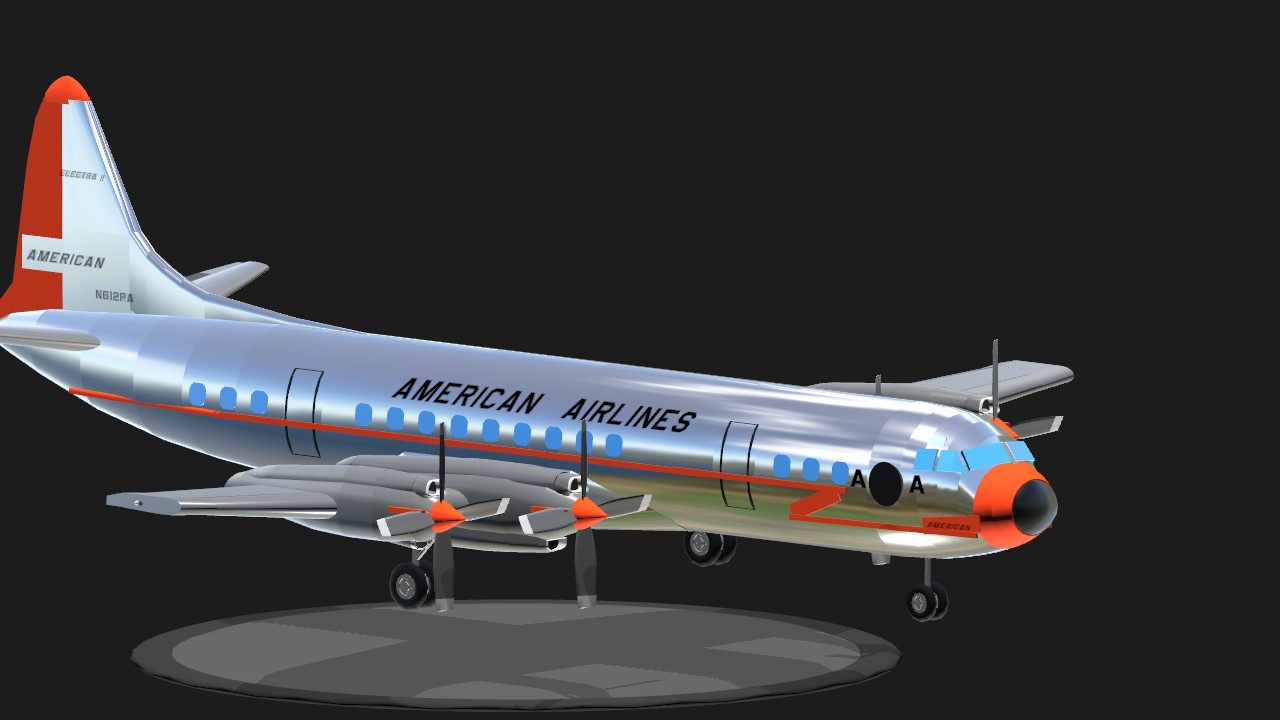
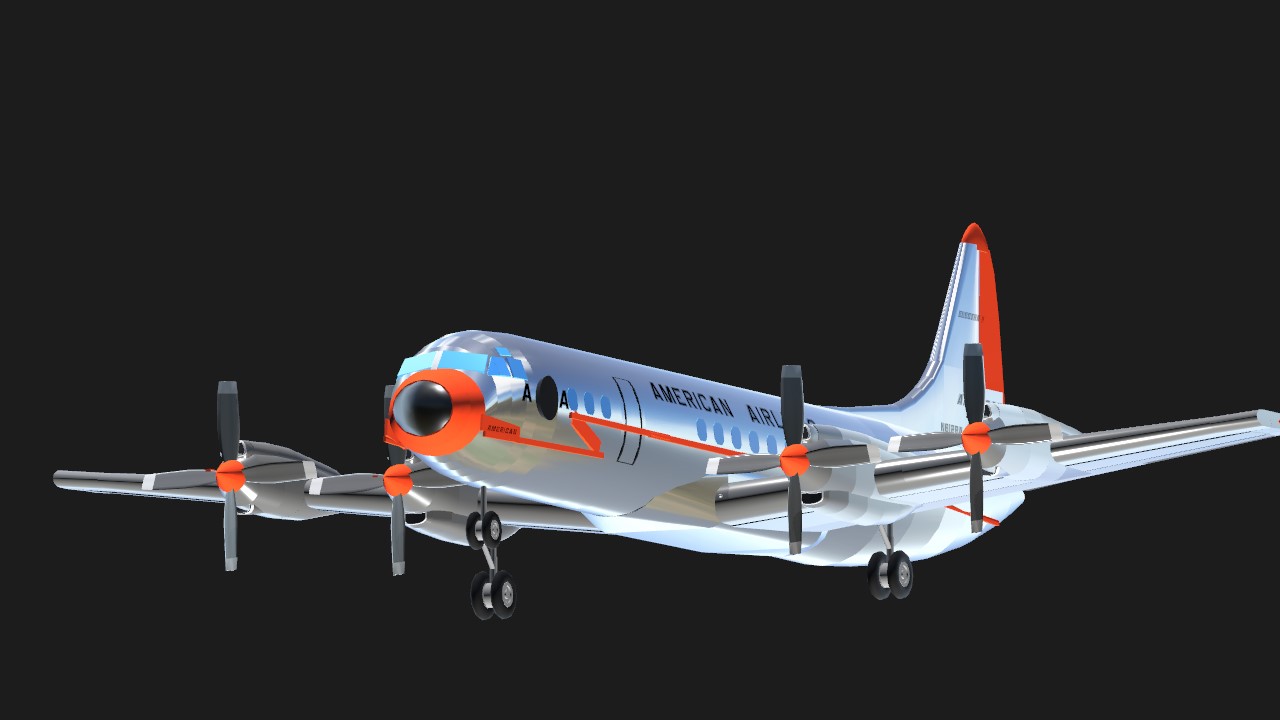
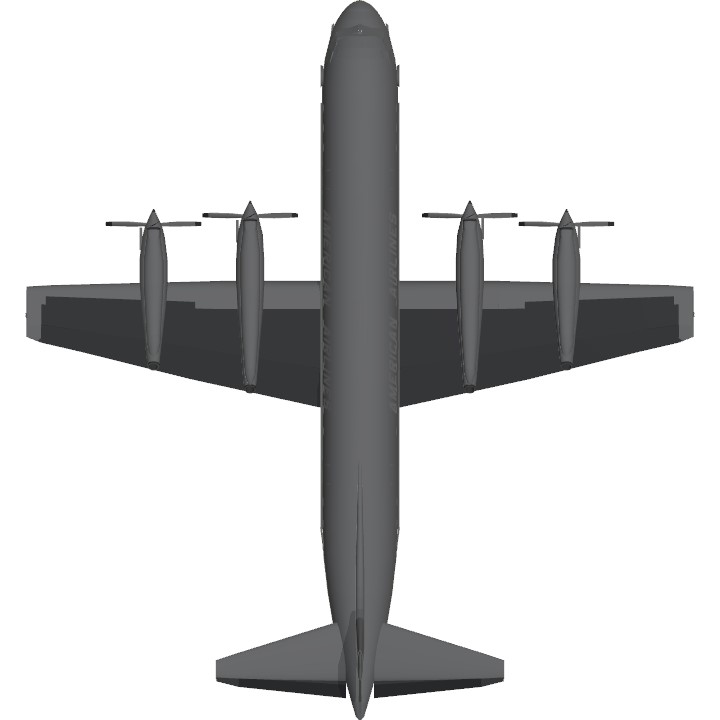
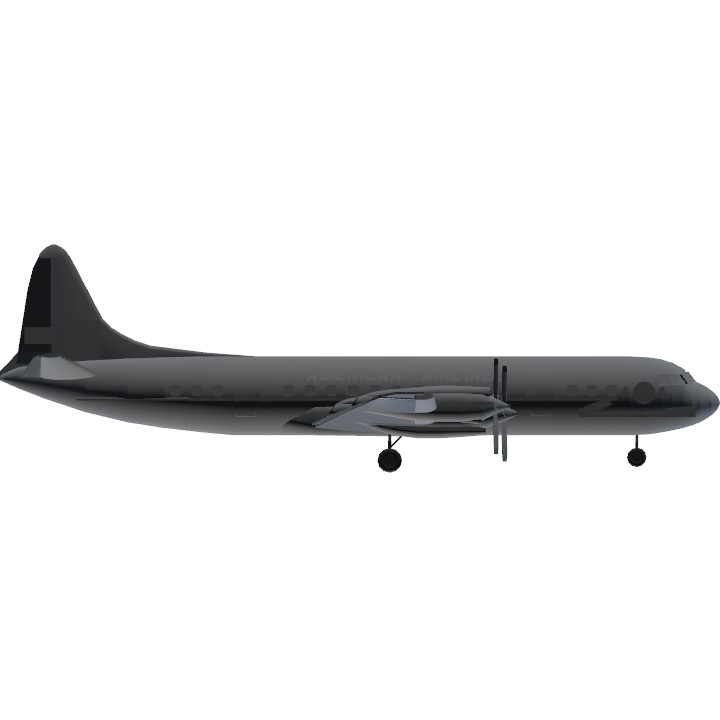
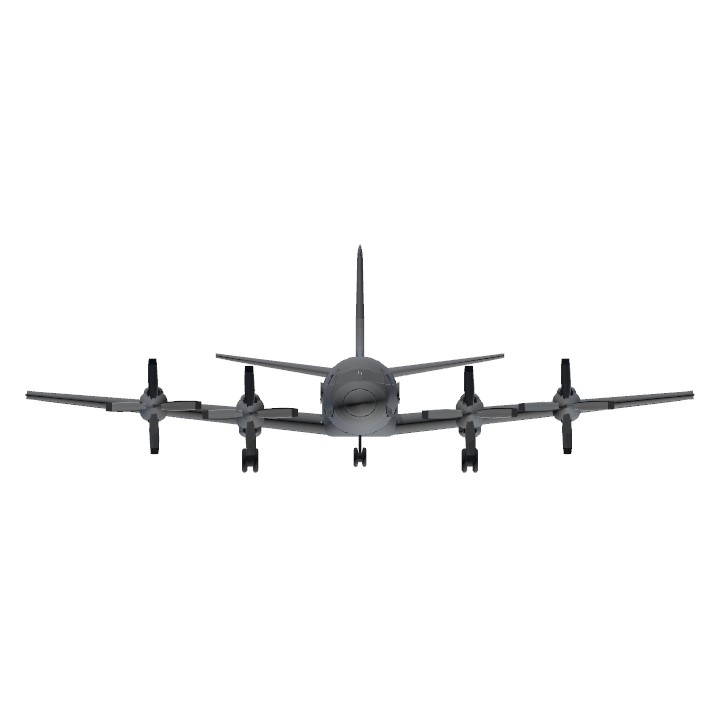
@NormalCv580enjoyer oh! i didnt know that. Thank you
Robert Kennedy once has been on board of one of these
CREDITS:
@Atokad